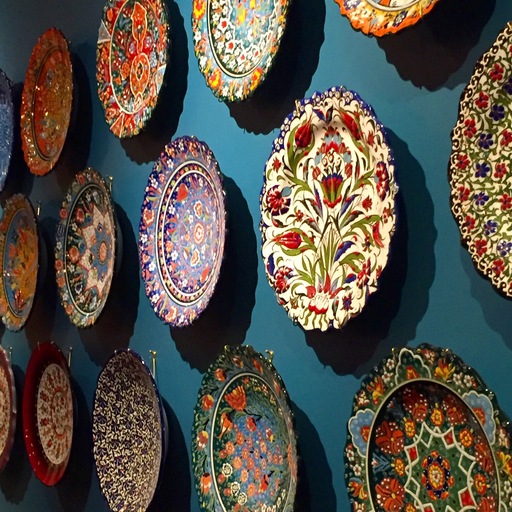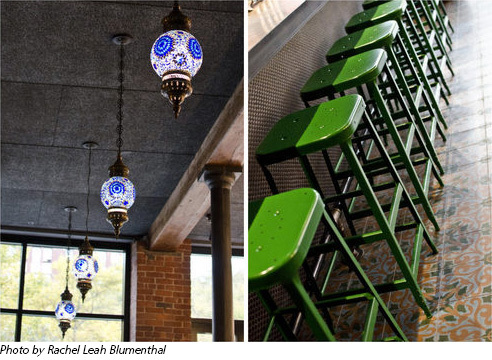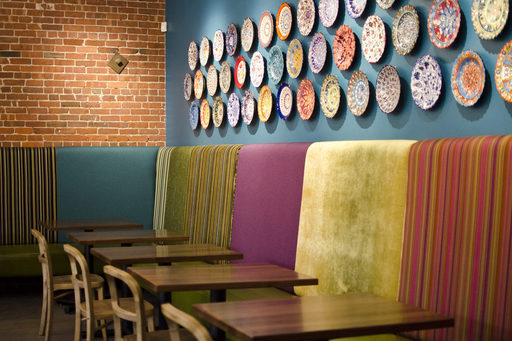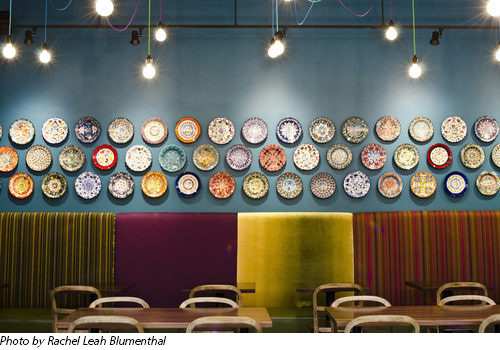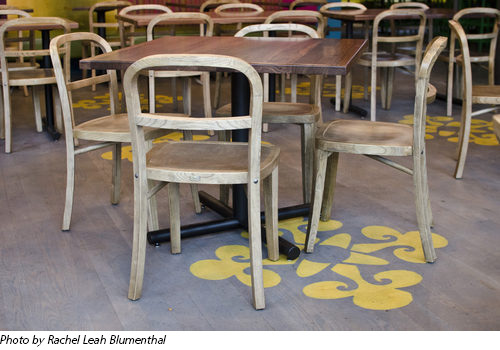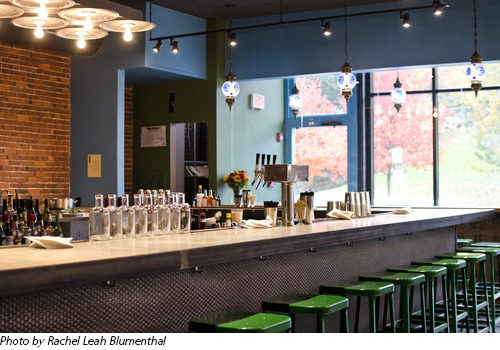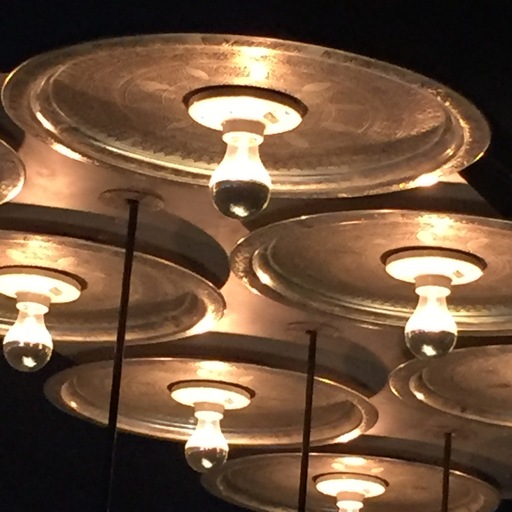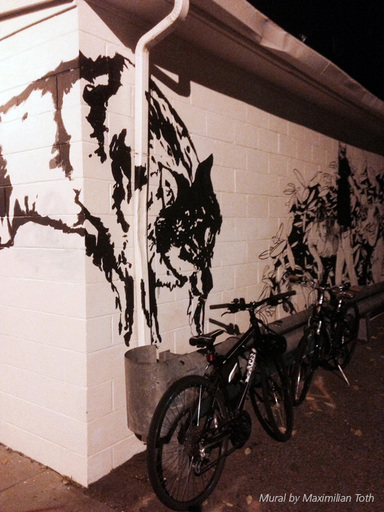Sarma
249 Pearl Street
Somerville, MA
completed 2013
Visit Sarma’s website.and read this 5-Star Review
Cassie Piuma and Ana Sortun’s memories and descriptions of humble yet exuberant restaurants and food shops in Turkey and Lebanon were the beginning point of our design. The Grand Bazaar in Istanbul is a huge influence: colorful tiles and textiles, patterned plates, brass lights, mounds and mounds of fragrant, beautiful spices, and intricate confections were all in our mind’s eye as we designed Sarma.
The food is the next point of departure. The concept, small plates inspired by Eastern Mediterranean cuisine, led us to think of the space with bursts of “flavor”, like the food. Color, pattern, and texture are our design ingredients. Also like the preparation of the food, we tried to let a sense of craft pervade the space, the character that is the result of bricks being laid by hand, of steel being forged, of tiles pressed into a mold.
The heart of the space is the Mezze Bar, a centerpiece that is a grand gesture meant to engage the senses. Its central location will help customers understand the care that goes into preparing the food. The food will be presented on silver trays and traditional ceramic platters, items collected over many trips, items that remind the diner of the deep roots of the things being prepared. A special fixture overhead made from hand hammered silver trays will light the Mezze Bar and help establish its pride of place. The open kitchen, with deep turquoise colored tile walls, is meant to help establish the importance of a sense of sharing and hospitality and help Cassie and Ana say “welcome to our kitchen”.
The large concrete and raw steel drinks bar that surrounds the Mezze Bar—with its bright green metal stools—will give the space a sense of liveliness and conviviality.
The space is imbued with deep, rich colors and patterns from the saturated blue green walls, to the traditional pattern on the floor to the twelve different fabric patterns that make up the banquette. Even the raw brick walls and Tectum ceiling give the sense a space of texture and color.
The materials used throughout the space are humble and traditional: brass lights, steel edges on a concrete bar top, hand painted cement floor tiles, mesquite wood mezze bar, walnut tables, oak chairs, glass walls, metal stools, and wood chairs.
It was our intention to restore the integrity of the existing building, the Litchfield Block, built at the end of the 19th century. Originally, the storefront would have been open to the street. The former tenant, the Paddock, closed the storefront with mismatched brick to create a dark bar, a place to retreat from the life of the street. By opening it up again, we have not only exposed shaped steel columns, but we were able to bring plenty of natural light into the space during the day, and allow the lively buzz inside Sarma to activate the street at night. On the interior, we have exposed and cleaned the brick walls and maintained the original brick arches. We’ve removed the enclosures of the steel columns and wood beam running through the center of the space.
We think that the most important design feature of any restaurant is that the space serves as a beautiful backdrop for the food and the service. But in this case, it seemed more appropriate to conceive of the space as wrapping and embracing the delicious food and elegant drinks—we thought of the space as Sarma.
